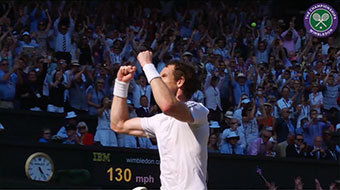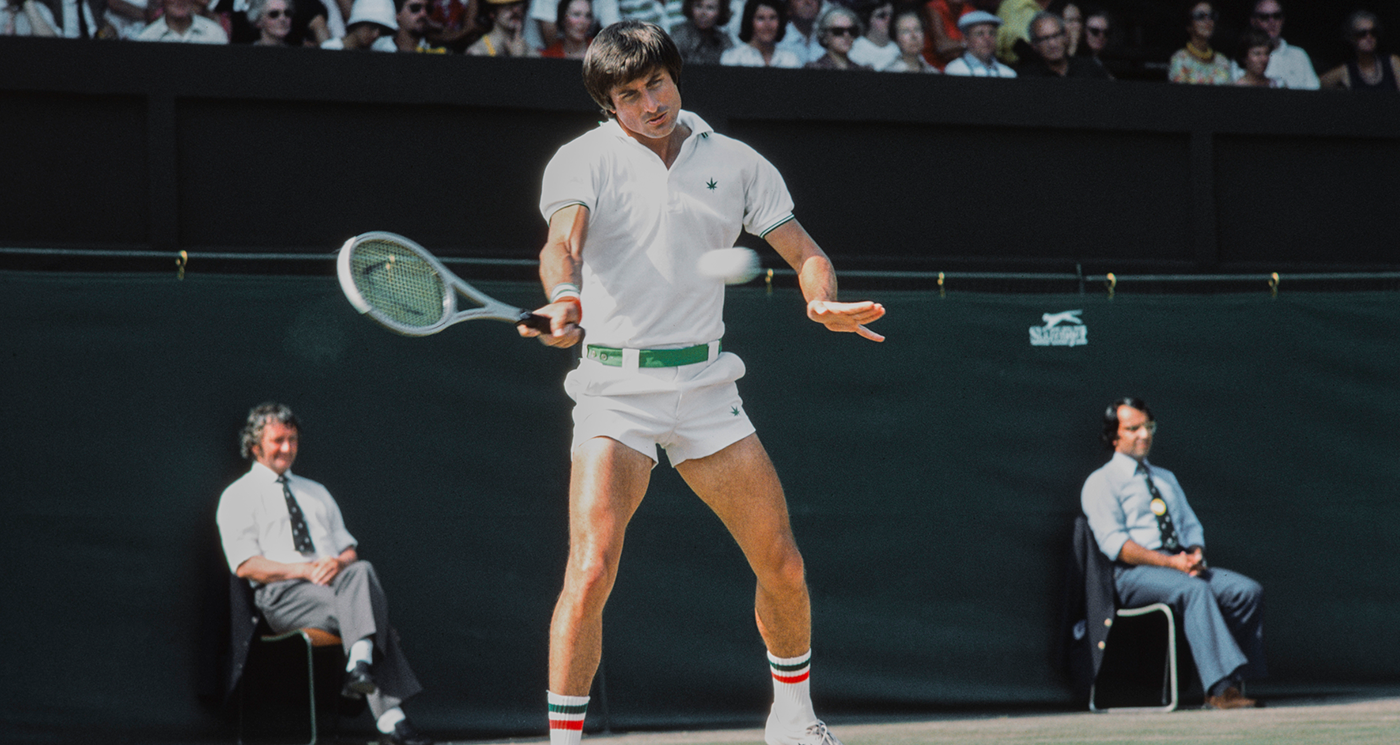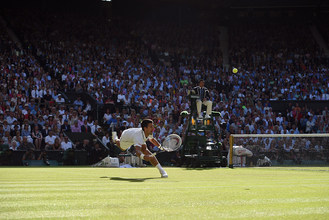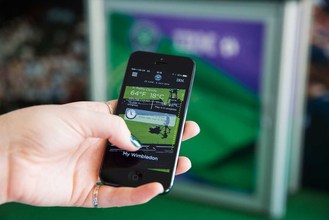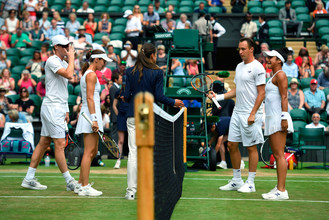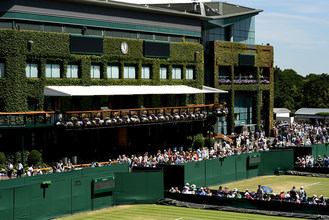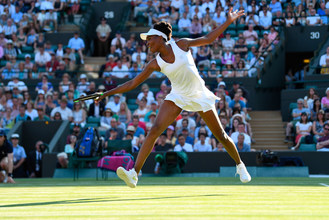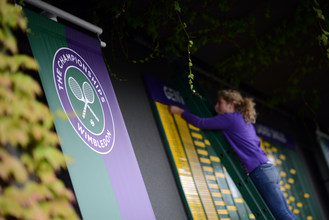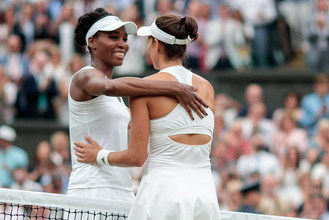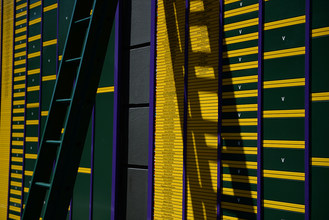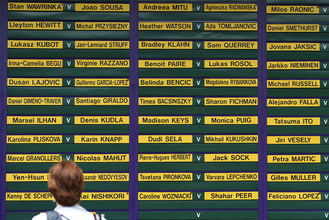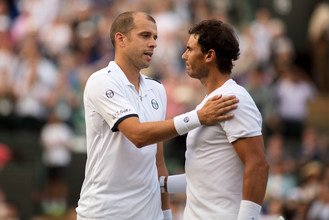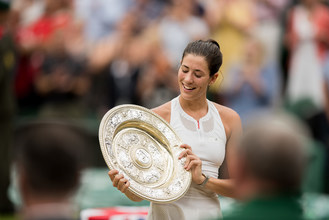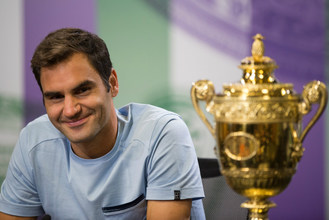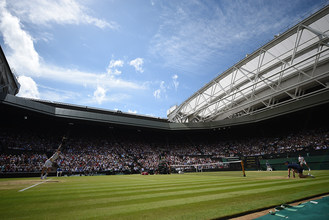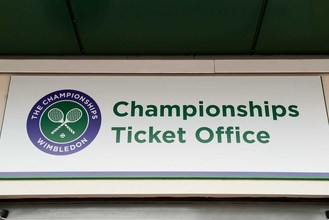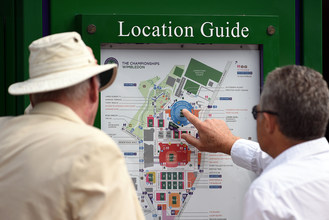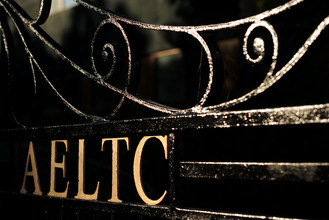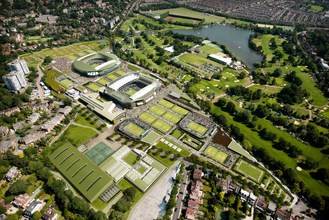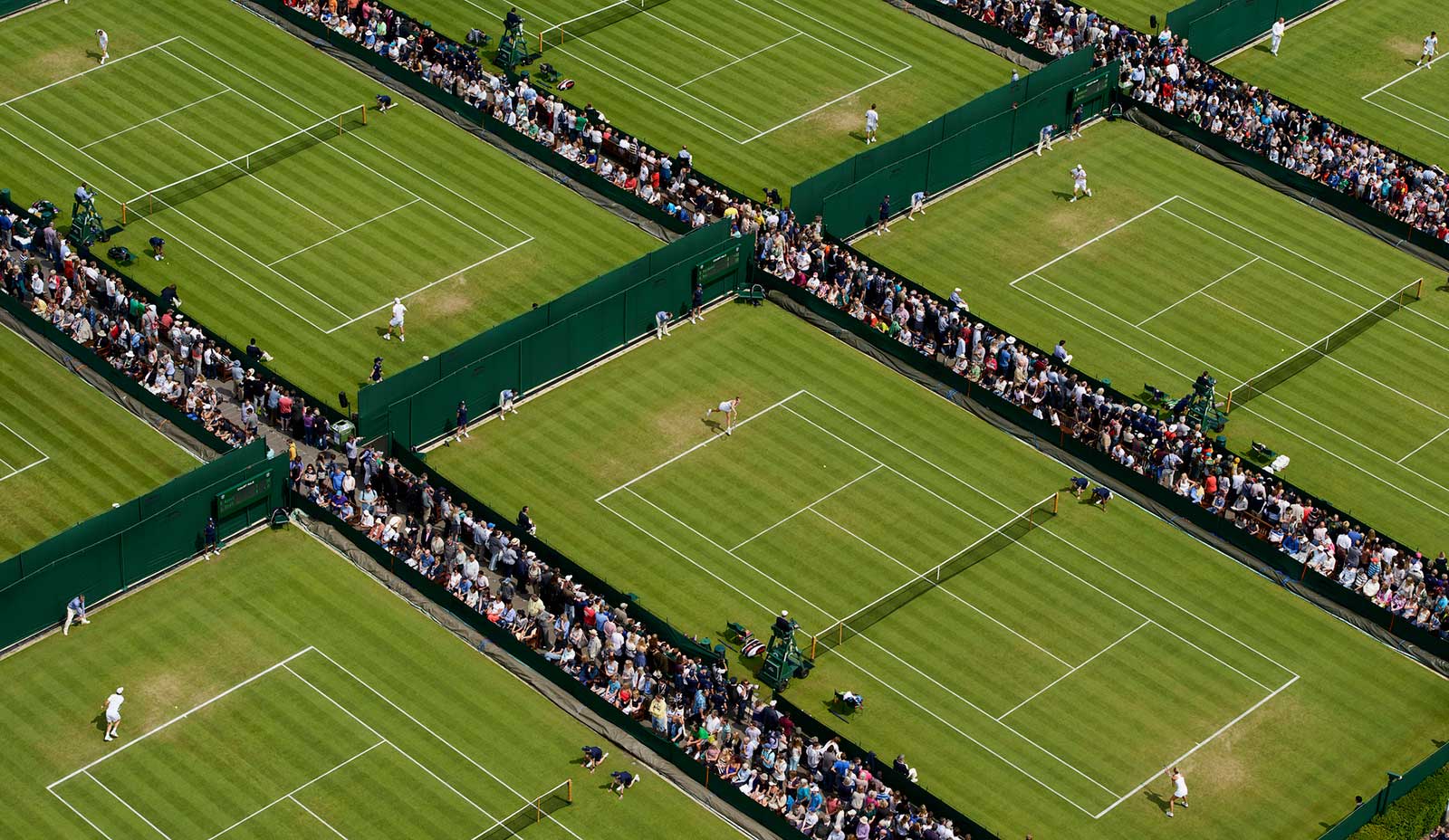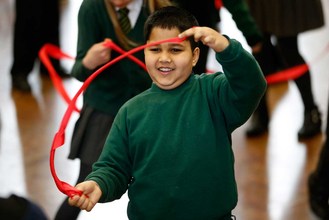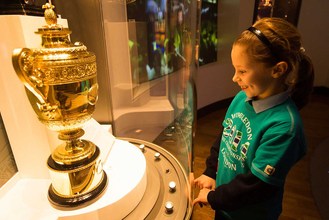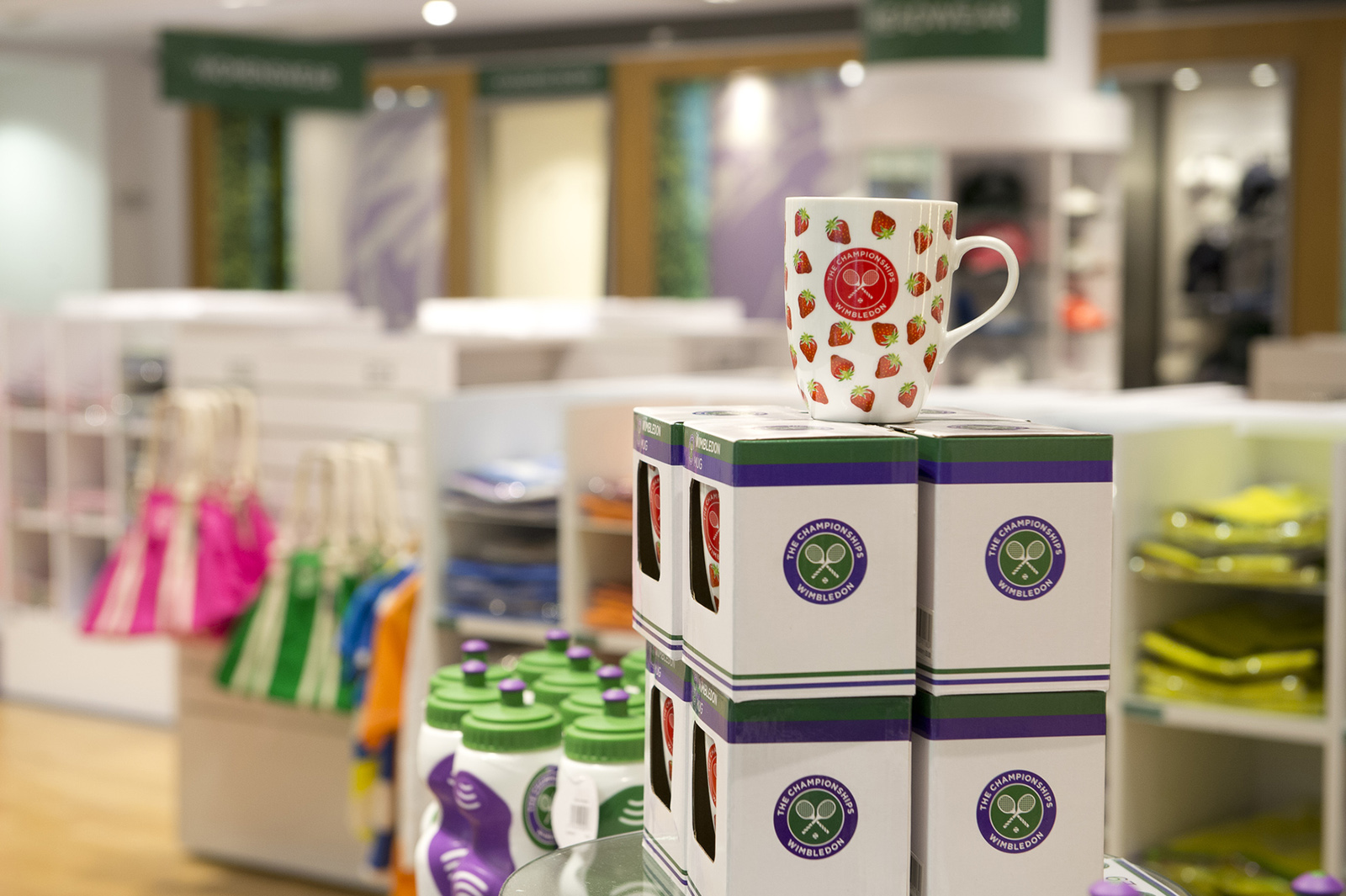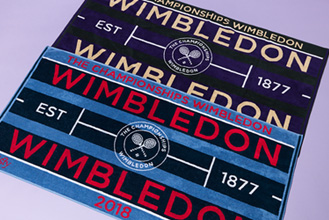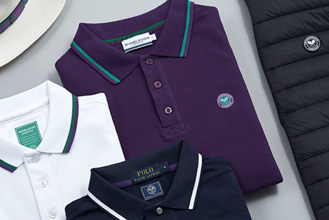Charlie Pasarell was a key figure in the rise of the Indian Wells tournament and the formation of the Association of Tennis Professionals, but as a player the 74-year-old native of Puerto Rico is perhaps best remembered for two remarkable first-round matches at The Championships.
In 1967 Pasarell knocked out Manuel Santana, the defending champion and No.1 seed, in the first match of the fortnight on Centre Court. Two years later Pasarell lost 24-22, 6-1, 14-16, 3-6, 9-11 to 41-year-old Pancho Gonzales after a gruelling encounter that lasted five hours and 12 minutes. It was the longest match in the history of The Championships until John Isner and Nicolas Mahut met 41 years later.
This week’s BNP Paribas Open at Indian Wells, where Pasarell was tournament director for 28 years, is a reminder of the wide-ranging contribution he has made to tennis. Under his leadership the tournament became the best-attended tournament in the world outside of the four Grand Slam events. Pasarell also worked with Jack Kramer, Cliff Drysdale and Donald Dell to establish the ATP in 1972 and was on its board for 20 years.
As a player Pasarell was an outstanding junior. He went on to prosper at the University of California, Los Angeles, playing in the same team as Arthur Ashe. He had a big serve, excellent technique and a stylish game that made him popular with spectators.
Pasarell won more than 50 titles in singles and doubles, but success at the very highest level eluded him. In doubles he made four Grand Slam finals but finished runner-up on each occasion, in New York in 1965 and 1969, in Paris in 1970 and in Melbourne in 1977.
In singles Pasarell made the quarter-finals of two Grand Slam events but never went any further. At the US Nationals in 1965 he was beaten in the last eight by Rafael Osuna and 11 years later he made the quarter-finals at The Championships before losing to Ilie Nastase.
However, by that stage Pasarell had already made a big impact at the All England Club. In 1967 he took on Santana in the opening match on Centre Court 12 months after the Spaniard had beaten Dennis Ralston to win the title. Pasarell won 10-8, 6-3, 2-6, 8-6 to become the first player to knock out the defending gentlemen’s singles champion in the first round. The only other top seed and defending men’s champion who has since fallen at the first hurdle was Lleyton Hewitt, who was beaten by Ivo Karlovic in 2003.
Pasarell told Wimbledon.com this week: “Wimbledon was the tournament that I wanted to win most. To me it was the ultimate prize. It’s the cathedral of tennis. The year I beat Santana I thought I was going to win the title, but I lost a very, very tight match on Centre Court [in the fourth round] to Thomaz Koch from Brazil.”
Two years later Pasarell was back on Centre Court to face Gonzales in another intriguing first-round encounter. Gonzales had made his debut at The Championships at the age of 21 in 1949, when he reached the fourth round of the singles and took the doubles title with Frankie Parker.
Later that year, however, Gonzales turned professional. The Mexican-American had already won four Grand Slam titles but subsequently spent the next 19 years exiled from the sport’s major events before finally returning when tennis went open in 1968. Into his forties he was still a formidable player and a ferocious competitor.
Gonzales was seeded No.12 going into The Championships in 1969 while Pasarell, then aged 25, was facing his boyhood idol in competition for the first time. When he first went to UCLA Pasarell had sought out Gonzales, who became his mentor.
Both men knew each other’s games inside out. “I decided I was going to concentrate on keeping him out on court for as long as possible,” Pasarell said. “I knew that the longer I kept him out there the better my chances of winning.
“Pancho liked to serve-and-volley and never liked to let the ball bounce. He didn’t like playing half-volleys. He always got really close to the net. I decided that I would chip the ball as slowly and as short as I could to get him really close to the net and then I would follow up with the lob. I wanted to do that all day long, the whole match.”
The plan worked well as Pasarell won a marathon first set, after which an increasingly frustrated Gonzales repeatedly appealed in vain for the match to be halted because of bad light. Pasarell took the second set before play was eventually called off for the day.
On the following day Gonzales changed tactics as he limited his forays to the net, but he still had to save seven match points, twice coming back from 0-40 down.
“I thought I had the match won, but he just kept coming back,” Pasarell said. “I was a little bit unlucky. On one of the match points I hit a lob over his head which was called out. It was a late call. If we had had Hawk-Eye then I think I would have challenged the call. Some people told me the ball was in.
“On another match point I hit a great return cross-court, he dived to the ball, fell to the ground and dropped his racket after making the shot. He had hit a drop volley with such a lot of back spin that although I got to the ball it got tangled up in the net and I couldn’t get it over the net.”
The match ended with Gonzales winning 11 points in a row. “I went back to the locker room and just burst out crying,” Pasarell recalled. “I went into a corner in the locker room and the next thing I knew I felt one of those big Wimbledon towels being draped over my head. I felt an arm around my shoulders. It was Pancho. He said: ‘Kid, I was very lucky.’ It was an emotional moment.”
At five hours and 12 minutes it remained the longest match in the history of The Championships until Isner took 11 hours and five minutes to beat Mahut on Court 18 in 2010. “People say that Isner and Mahut beat our record, but I always point out that Pancho and I still hold the record for the longest match on Centre Court,” Pasarell said.
While the defeat hurt at the time, Pasarell came to appreciate having played his part in such a historic match. “I don’t think we would be talking about that match today if I had won it,” he said.

